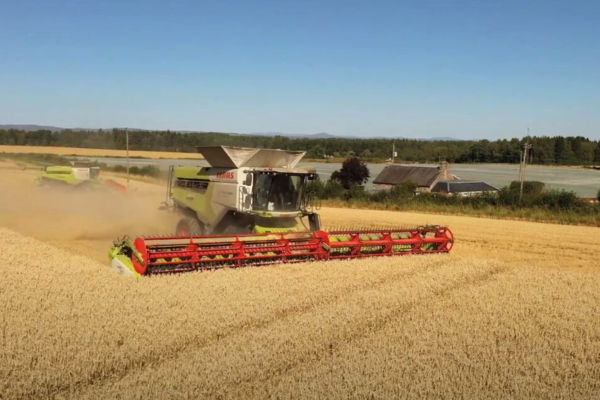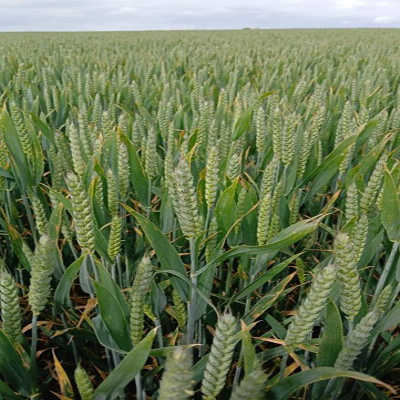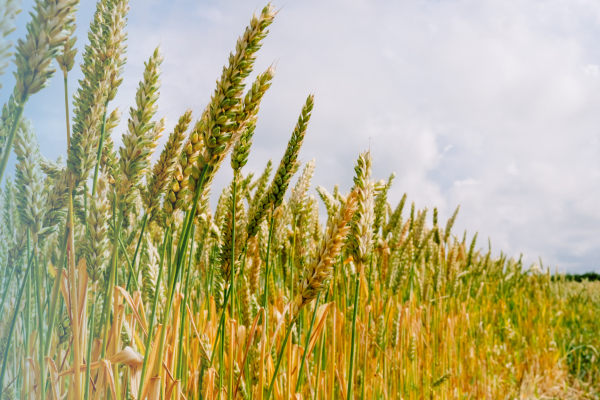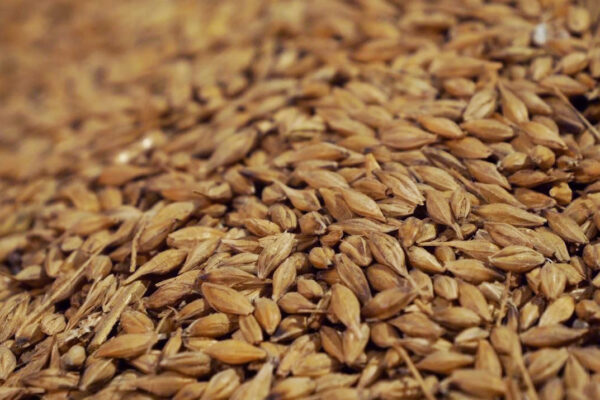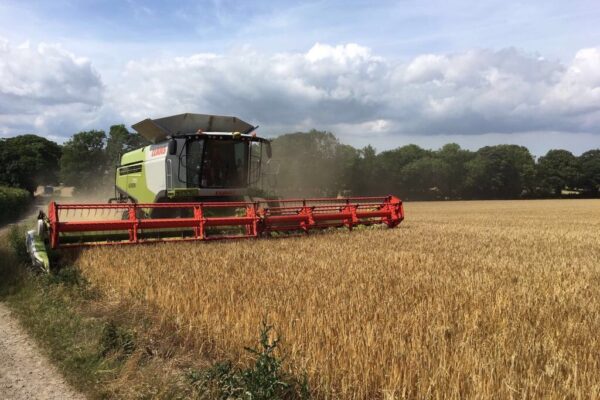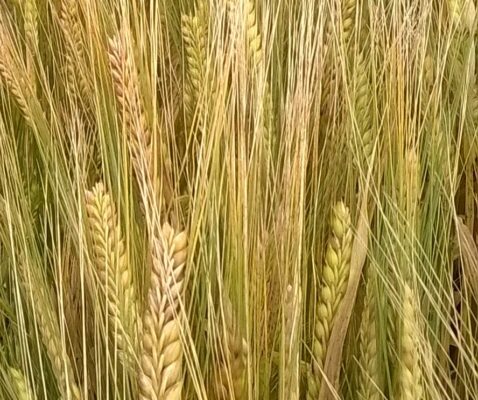Business and Policy September 2025 – Cereals
29 August 2025Harvest off to a Fast Start
This harvest may well prove to be one of the swiftest that farmers can recall given the exceptional harvesting conditions and drying winds. The fine spell through July continued through August, giving successive heatwaves over the summer and, as a result, the majority of winter barley grain went into stores in rapid order without the need for drying.
Much of the spring barley crop has come in quickly too. Although reports suggest that the quality is mixed with some elevated grain nitrogen levels, but perhaps of more concern, is higher screenings, which in some instances will be well above contractual tolerances. Normally this would unsettle the market, but lower distilling demand is helping to steady buyer sentiment for now.
Aside from the positives reported around yields this year in some areas, the caveat to this across the cereals sector remains price. The November 2025 feed wheat futures continue to fall and on 25th August stood at £168/ton, down £9/ton from four weeks ago. May 2026 wheat futures were similarly down £10/t month on month.
Grain imports at record highs as exports fall
The UK grain sector is still recovering from a challenging 2024 season when excessive rainfall reduced yields and quality across the board. Wheat, barley, oat, and oilseed rape exports all fell sharply below their five-year averages last year. Barley exports were the lowest for over 12 years, partly because Spain reduced its imports of UK grain. Wheat exports were similarly depressed, down 73% year on year. At the same time last year imports surged, particularly of wheat and maize, reaching record levels as domestic supply and quality faltered. UK wheat imports alone rose to 3.06 million tonnes, the highest on record.
Home-grown stocks – low for wheat, high for barley
Prior to this harvest starting, the AHDB reported that merchants, ports and co-operatives in the UK held 39% less home-grown wheat at the end of June than a year earlier and the lowest amount in the last ten years. Conversely, they held a record 303,000 tons of imported wheat stocks: 21% more than in June 2024. In stark contrast, merchants, ports and co-operatives held 21% more home-grown barley at the end of June 2025 and 70% more oats, compared June 2024.
2025 crop markets
Looking ahead to this season’s crops, domestic demand is reawakening given the current low wheat prices, with feed compounders and millers seizing the opportunity to secure forward cover at attractive levels. Farmers, however, are reluctant sellers, unwilling to commit volumes at unprofitable prices. This standoff has pushed basis and premiums higher than would normally be expected at this point in the season, albeit in a deflated market.
Currency continues to add another layer of complexity to markets. The Bank of England’s decision to reduce interest rates from 4.25% to 4.00%, the lowest level since March 2023, has influenced sterling movements in recent months. Since early January, sterling has appreciated by around 8.5% against the US dollar while weakening against the euro (Fig 1). The stronger pound versus the dollar makes US-origin commodities, such as wheat and maize, more competitive imports for the UK, exerting downward pressure on domestic cereal and oilseed prices. Conversely, the weaker pound versus the euro improves the UK’s relative competitiveness into European markets, though the rally in sterling late last year had already dented export momentum.
Fig 1. Exchange rate movements: Sterling v US Dollar v Euro

Across to European and Black Sea trade, Algeria has turned to German wheat in recent tenders while Egypt is sourcing French origins. This reflects quality challenges in the Black Sea as Ukraine and Russia are facing slower export flows after a difficult growing season with unseasonably late spring frosts and searing summer temperatures. In contrast, France is enjoying an excellent quality year, strengthening its hand in North African and Middle Eastern markets. These shifts may open some potential opportunities for UK grain, though they will be shaped heavily by the competitiveness created through currency fluctuations.
To the west, the United States is exerting increasing influence. US maize and wheat remain competitively priced in global markets, supported by sterling’s strength against the dollar, which makes American imports more attractive in the UK. This competitiveness has been further underscored by trade deals that enhance US access to the British market. The closure of Associated British Foods’ Vivergo bioethanol plant in Hull being a case in point after the UK removed its 19% tariff on U.S. ethanol, and highlights the disruptive effects of this new trading landscape. Once the largest bioethanol facility in Europe, Vivergo’s shutdown removes a key domestic demand outlet for home grown wheat given it took in and processed around 1 million tons annually from the surrounding regions.
EU production of oilseed rape is stronger this season (up from 16.8 million tons last year to 19.6 million tons this year). The UK will itself have near to 1 million tons on the back of an exceptional harvest but will still need to import some 750,000 tons.
Mark Bowsher-Gibbs, Mark.Bowsher-Gibbs@sac.co.uk
| £ per tonne | Basis | Sept 25 | Nov’25 | Mar ’26 | Nov ‘26 |
|---|---|---|---|---|---|
| Wheat | Ex farm Scot Sept. Nov/Mar/Nov 26 Futures | 165 | 168 | 175 | 185 |
| Feed Barley | Ex farm Scot Sept. Nov/Mar/Nov 26 Futures | 142 | 145 | - | - |
| Malting Barley | Ex farm Scot | 165 | - | - | - |
| Oilseed Rape | Del Montrose | 390 | 397 | - |
Indicative grain prices 25th August 2025 (Source: SAC//United oilseeds/AHDB/Hectare)
Sign up to the FAS newsletter
Receive updates on news, events and publications from Scotland’s Farm Advisory Service

